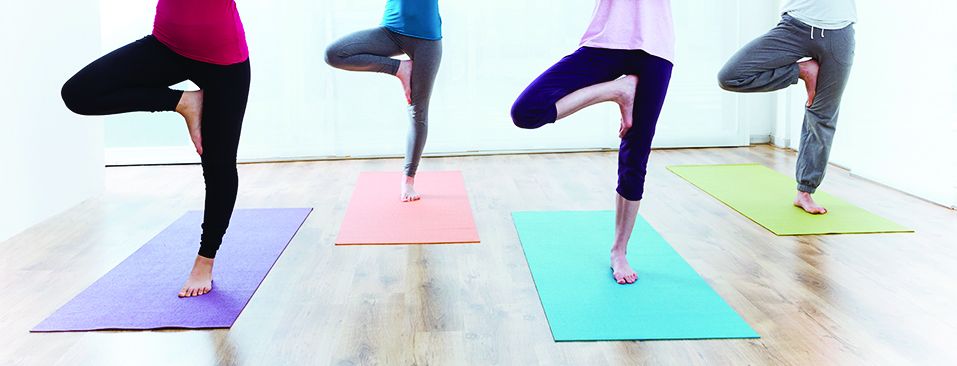
Balance: What is it Really and How Do I Improve It?
By Kurt Gilbertson, DPT, XPS
Therapydia Lake Oswego Physical Therapist
If you’re reading this, then there’s a good chance that you’ve been told to improve your balance. You may be thinking to yourself: how did I get bad balance? Don’t I balance everyday? Where do I start?
Today, I’d like to (hopefully) simplify balance for you and answer some questions you may have, such as: Why do I tend to trip in the dark? Or, why do I veer left when looking right? To begin, let’s look at the balance system as a whole.
The balance system has three components: Visual, Vestibular and Somatosensory
Visual: This is the most obvious component in that you know that your balance is worse with your eyes closed or when it’s dark. This is because when your eyes are open, your brain relies on the information you see. It begins to interpret and integrate what is perceived into its own reality of space (balance). This means that when you’re relying on your sight to keep your balance, you will immediately sway once it is taken away. In a perfect world, your balance system would be able to maintain itself without visual input but how could it if it’s never been trained to do so? So, let’s train it. Luckily, training is as easy as performing this simple test:
If balance is a worry, please stand next to something secure and hold on if need be.
Everything done with eyes closed. You should be able to complete level 5 five times without falling over.
Do 1 -> 5 as you can for the test. The treatment is the level you fail at or the level under failure depending on how hard the the above test was.
1. Widebase
2. Narrow Base
3. Tandem
4. Single Leg
5. 5 Second Alternating March
When babies develop, the stimulus of movement guides their visual field development. The more they move, the more they see and interact with new depths of field. As we develop further, we tend to rely on the visual field to guide our movement, often so that our vision can begin to override other senses (vestibular, proprioception), which is why we tend to sway when balancing with our eyes closed.
Vestibular: This system is growing in public knowledge—unfortunately due to vertigo and increasing falls among the elderly population—but it can be confusing so lets make things easier by looking at the anatomy of the ear first:

Inside your ear are two systems: Cochlear (hearing) and Vestibular (equilibrium). Equilibrium is the sense of balance, feeling level or equal on both sides. In the above picture, locate the semicircular canals which stimulate the vestibular nerve. See how there are three? There are also three planes of movements. Remember the X/Y/Z axis in algebra? (Cue the great algebra memories) Those three axes are the three planes of those canals which are designed to stimulate your brain, via the vestibular nerve, to signal to your brain that you’re standing upright or you’re laying down or you’re looking left/right.
Refer to the picture below: these canals are filled with fluid that moves when your head moves, which then moves sensory receptors in your inner ear: calcium crystals and hair cells which communicate with the brain. The brain is the CEO and knows which canal is up/down, left/ right, and it decides to orient your mind and the rest of your senses to where you are facing. Those struggling with vertigo have hair cell stimuli telling them something that the rest of the senses disagree with, creating the dizziness and nausea symptoms. For those curious of vertigo (BPPV) and these crystals, view this video.

Now, onto how this influences your balance. If you stay in a small amount of positions without challenging your brain to interpret vestibular stimuli, it becomes maladaptive to vestibular stimuli. Which is fancy talk for when I look left, I sway and fall right.
The small amount of positions are typically sitting, standing and laying down while looking in the direction we are facing. Hardly ever do we move where we aren’t looking because we rely on the eyes. The vestibular stimulus always follows behind the visual stimulus, until it doesn’t, and then we lose balance. Let’s make that simple again by testing.
If balance is a worry, please stand next to something secure and hold on if need be. If you have prior history of neck or shoulder pain with head movements, start slow and contact a Therapydia physical therapist.
Everything done with eyes open. Head Turns and Head Nods stimulate the vestibular system. The faster you move your head the harder it is so start slow.
You should be able to complete level 4 five times (L/R & Up/Down) without falling over.
Do 1 -> 4 as you can for the test. The treatment is the level you fail at or the level under failure depending on how hard the the above test was.
1. Widebase
2. Narrow Base
3. Tandem
4. Single Leg
Luckily again, the test is the training.
Somatosensory: Somato = body. Sensory = physical perception. Somatosensory is your body’s physical awareness to stimulus. In regards to balance it has two components: proprioception and exteroception. The former being (per)ception of internal positioning and the latter being (per)ception of external stimuli. Both create the body’s awareness of itself in space, i.e spatial awareness. This is largely influenced by your sensory nerves especially in your feet of which there are millions of them that are constantly talking to your brain about temperature/ pressure/heat (extero) and movement on surfaces (proprio). We tend to spend most of our waking time in shoes which limits how much our feet sense the outside (external) world. We also tend to not move our bodies outside of comfortable positions so the proprioceptive awareness isn’t challenged and it begins to decrease.
Well, that got a bit confusing right? As long as you understand that what you are sensing is talking to your brain and if you limit the amount of time sensing new things, the body will react adversely to new stimuli. Let’s make it more simple by showing you how to improve the somatosensory system for balance which can be done through the movement (proprioceptive) component. See the test below.
If balance is a worry, please stand next to something secure and hold on if need be.
Remember the somatosensory system is challenged by different surfaces you are on. So this one incorporates the same positions (wide > narrow > tandem > single leg) as able but the challenge is increased by harder surfaces to balance on.
Start with a pillow at home, and at the gym there will be balancing pads, discs, and a BOSU. For those trying to do the disc or BOSU hold on first and please be careful. It gets wobbly!
You should be able to complete level 4 holding 60 seconds without falling over.
Do 1 -> 4 as you can for the test. The treatment is the level you fail at or the level under failure depending on how hard the above test was.
1. Widebase
2. Narrow Base
3. Tandem
4. Single Leg
And again, the test is the training.
Once a majority of the above trainings get easy, it’s much more fun to incorporate all them together.
Try these below. Have some fun with it but be safe. 🙂
1. Leg Movements (Eyes Open / Eyes Closed)
2. Leg Ball Circles (Eyes Open / Eyes Closed)
3. Arm Ball Circles (Eyes Open / Eyes Closed)
4. Ball Throws
If you read through this again you’ll see two common themes: Challenge Yourself and Use It or Lose It. Don’t rely on your eyes to determine 100% of what your perceiving, let your feet do some talking, and move with purpose in ways you’re not used to. You’ll be amazed at how quickly balance improves when it is properly challenged. If left unchallenged, don’t be surprised that your balance slowly deteriorates because why should it be good at something that it is never asked to do?
balance exercises, balance training, exercises to improve balance, somatosensory, vestibular system


